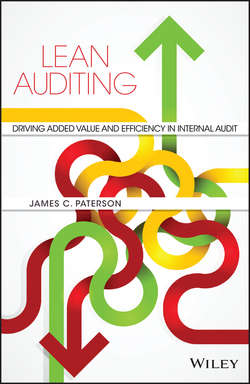Читать книгу Lean Auditing - Paterson James C. - Страница 11
На сайте Литреса книга снята с продажи.
PART 1
Lean and Lean Auditing in Overview
1
Lean Auditing at AstraZeneca
ОглавлениеAfter 15 years working in a range of finance roles, I was appointed the CAE of AstraZeneca PLC in 2002. My appointment came a few months after the enactment of the US Sarbanes–Oxley Act, following the collapses of Enron and Worldcom.
If I needed a reminder that good financial control was important, this was it. I therefore spent the first two years in my role supporting and quality assuring the embedding of Sarbanes–Oxley disciplines, whilst also working on a range of other areas in GRC and assurance as well as developing the internal audit function.
By 2005 we had made progress on a number of fronts. However, it was clear that pressure on costs would increase, and as a result my audit management team and I decided that we should engage with the cost agenda in a proactive manner: “Better to work on our efficiency and effectiveness ourselves than have someone else do it for us.”
At the suggestion of one of the Audit Directors, David Powell, we decided to work with colleagues in AstraZeneca’s manufacturing function, who specialized in lean manufacturing techniques. We contacted John Earley (now Partner, Smart Chain International), who was working in manufacturing at the time, and after obtaining some key inputs from him, we developed a number of new ways of working within the audit function.
What impressed me at first was just how quickly and cheaply the lean techniques could be implemented and the scale of the efficiency gains achieved. In later years I also admired the way lean principles informed much of what we were doing to deliver added value: from audit planning to stakeholder engagement, from our approach to assignment delivery to the way we carried out testing, and from the way we reported our work to the performance metrics we used.
The lean auditing approach also offered a positive way of thinking about the role of internal audit and the value it could deliver that was appreciated by both senior managers, the board and audit staff. In addition, our approach to audit planning and the ways that we had changed our executive and board reporting gained recognition within the internal audit profession (within the IIA UK and also the Corporate Executive Board, Audit Director Roundtable).
Further details of the progressive practice we developed will follow in subsequent chapters. However, first it seems appropriate to say a bit more about lean.
References and Other Related Material of Interest
Paterson, J. (2007) Business partnership redefined, Audit Director Roundtable. AstraZeneca case study
Paterson, J. (2008) Internal audit for the 21st century. IIA Scotland
Paterson, J. (2009) Internal audit: the times they are a changing. Chartered Institute of Management Accountants
Paterson, J. (2009) Future developments in internal audit. IACON
Paterson, J. (2012) Giving assurance IIA UK. Heads of Internal Audit Service
Paterson, J. (2012) Developing an effective audit strategy. IIA UK Head of Audit Service
